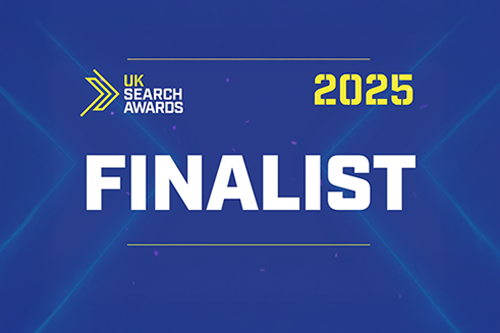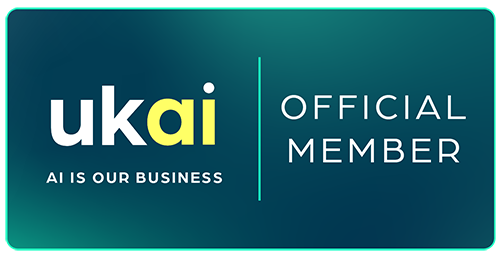What You’ll Learn
- AI is transforming how users search, interact and buy.
- Microsoft Ads now runs on a connected, AI-powered ecosystem.
- Performance Max (PMAX) helps marketers scale across the full funnel.
- Search behaviour is now conversational, multimodal and personal.
- Learn five key habits to future-proof your search strategy.
This guide draws on the latest insights and data from Microsoft’s AI-powered advertising solutions. It explains how search is evolving and provides practical guidance on using tools like Performance Max (PMax) to stay ahead in a fast-changing environment.
Microsoft Ads and the New AI Ecosystem
To understand where advertising is heading, we need to look at how the platform itself is evolving. Microsoft Advertising is no longer just a set of separate campaign types. It’s a connected ecosystem, bringing together Search, Shopping, the Audience Network and PMAX, working together across the full marketing funnel.
We’re moving away from relying on manual keyword management, towards smarter, AI-driven systems that deliver real results. This integration is already reshaping how campaigns are created, optimised and scaled.
Here’s how that shows up in practice:
How generative AI is reshaping search
The change isn't just in the advertising tools; it's in the very nature of search itself. Search is evolving from a simple act of querying into a rich, interactive and creative process.
Three shifts in user search behaviour
This transformation is driven by three major shifts in user behaviour and expectation:
- It's becoming conversational
Users increasingly expect to interact with search using natural language, asking complex questions and refining their queries iteratively, much like chatting with a person. Data confirms this trend, showing a rise in question-formatted searches and users engaging in longer chat turns within AI interfaces like Copilot. - It's multimodal and creative
Search is no longer just text-in, text-out. Users can search with images or voice, and the AI can generate new content – text, images, and soon, video – as part of the response. This blurs the line between searching for information and creating something new. - It's deeply personalised
AI now uses a rich tapestry of context, including the current conversation, user history and other signals, to tailor results. This level of personalisation is no longer a bonus; it's an expectation and users express frustration when it's absent.
The collapsing customer journey
What once required multiple searches across numerous websites and browser tabs can now be accomplished in moments within a single AI interface.
For example, instead of a user manually digging through 10 different retail sites to compare specifications for a video-editing laptop, they can now ask the AI to synthesise the information, compare models and even show current prices, all in one conversation.
This acceleration from discovery and research to decision and action is redefining what it means to be present and relevant.
5 AI-Ready Habits for Marketers
Marketers must move beyond old habits and embrace a new set of principles to future-proof their approach. The following five imperatives are critical:
- Optimise for real language and intent
Go beyond keywords and focus on the underlying meaning and intent of a user's conversational query. - Prepare content for conversation
Structure your website and product information in formats that AI can easily digest and repurpose for chat, such as clear Q&As and concise snippets. - Build modular, AI-ready content ecosystems
This means creating a library of flexible content assets, text snippets, images and videos that an AI can easily mix, match, and adapt to generate responses in different formats and tones depending on the user's context. - Use your first-party data for personalisation
Use what you already know about your customers to feed the AI and help it deliver more personalised and relevant experiences. - Embrace automation and dynamic asset generation.
Fully commit to AI-driven tools like PMAX and Copilot to manage campaigns and generate creative at scale.
It’s important to remember that this AI-driven approach doesn't replace traditional search; it amplifies it. Data shows that three-quarters of users find Copilot to be complementary to search, and 38% reported using Bing more after trying Copilot.
Winning with Performance Max (PMAX)
If AI is reshaping digital advertising, then PMAX is one of the main tools helping advertisers adapt. It’s designed specifically to work with Microsoft’s AI and automation capabilities, delivering conversions across the full range of Microsoft’s inventory – from search and MSN, to Outlook, partner sites and the Audience Network.
With consumers moving across multiple platforms and touch-points, this wide reach helps advertisers stay present throughout the customer journey.
How PMAX fits into the AI-powered ecosystem
PMAX works alongside your other campaigns as a smart, automated layer. While exact match search campaigns still take priority for highly specific queries, PMax looks for additional conversion opportunities across the wider network – opportunities you might otherwise miss.
Since May 2025, standalone Shopping campaigns are no longer prioritised over PMax, making it particularly important for retail advertisers. The setup is straightforward: you provide creative assets (such as headlines, descriptions, images and videos) along with your business goals (like maximising conversions or conversion value). From there, the system decides the best combination of placements, formats and audiences to reach those goals.
To give the AI enough data to work effectively, it’s recommended to allocate two to three times the budget you might have used for previous standalone campaigns. This helps the system learn faster and deliver better results over time.
Giving advertisers more control and insight
While heavily automated, PMAX is not a "black box." A series of recent and upcoming features provide advertisers with more control and visibility.
Hard data on AI's impact on ad performance
The value of AI in advertising is becoming clearer through real performance data. Since the Copilot relaunch in November 2024, analysis shows that AI-driven interactions are making a noticeable impact.
When users engage with ads within the Copilot interface, performance metrics show a big improvement:
The benefits of Copilot extend beyond its own interface. Users who engage with Copilot often go on to interact more with standard Bing search ads, showing increased levels of engagement.
Click-through rates on Bing rose by 9% for Responsive Search Ads, 13% for Shopping ads, and 100% for Multimedia Ads. These more engaged users also drove down costs, with cost-per-click falling by 44% for Multimedia Ads and 15% for Shopping ads.
Driving commercial intent and purchases
Perhaps the most powerful data point is the direct link to sales. Copilot interactions are directly boosting commercial activity.
- Overall, Copilot usage leads to a 53% increase in purchases.
- For chat sessions that AI identifies as having "shopping intent," the purchase uplift within 30 minutes is an astounding 194%.
- The top-performing commercial categories in this environment are Tech, Travel, Games, and Autos.
This data shows that AI interaction primes users, refines their intent and directly leads to significant commercial value.
What this means for Google and the broader search landscape
While these insights focus on the Microsoft ecosystem, the changes we’re seeing aren’t limited to one platform. The shift towards AI-powered, conversational search is happening across the industry. Advertisers need to think more broadly about how these changes affect their approach across all major platforms.
What we’ve seen with Bing and Copilot closely mirrors developments at Google, particularly with its Search Generative Experience (SGE). Google is also moving away from the traditional list of blue links and towards AI-generated answers that appear directly on the results page, often with conversational follow-ups. This creates similar challenges and opportunities for advertisers.
The customer journey is changing
With AI answering more questions up front, the path from discovery to decision is getting shorter. People are clicking through to fewer external websites, so it’s more important than ever that your brand’s content, offers and information show up clearly and consistently within these AI-generated responses.
No matter the platform, the content you create needs to be well-structured, easy to understand and designed to answer user questions clearly. That’s what helps AI systems find and present your content in a meaningful way.
Shared strategies across platforms
Microsoft’s PMAX approach also applies to Google’s version of the same product. Both rely on AI to automate bidding, targeting and creative delivery across multiple placements. To get the most out of these tools, advertisers need to provide strong creative assets and use high-quality audience signals to guide the system.
The added features in Microsoft’s PMAX, like improved reporting and control, reflect a broader industry move towards giving advertisers more transparency within these automated campaigns.
This isn’t about choosing between platforms, it’s about adapting to a new way of working across the board. Skills like understanding intent, creating modular content and running goal-based, automated campaigns are now essential. Success depends on how well you can supply the right data, signals and creative inputs to support the AI, regardless of which platform you’re using.
Key Takeaway for Marketers
AI is no longer a future trend, it’s shaping how users search, discover and buy right now. Microsoft Ads, with tools like Performance Max and Copilot, offers a practical way to stay competitive in this new environment.
To succeed, marketers need to:
- Structure content for AI understanding
- Optimise for intent, not just keywords
- Use automation to scale across touch-points
The brands that adapt quickly will be the ones that maintain visibility, relevance and results across both search engines and AI-driven platforms.
Want help applying these insights to your campaigns? Talk to our team about using AI-powered advertising to future-proof your strategy.











































